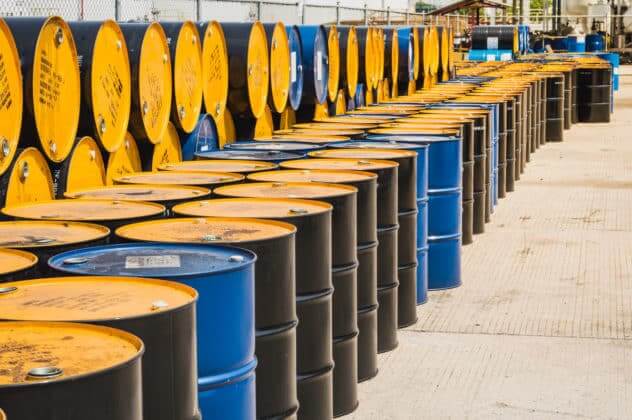
Oil and gas dip while precious metals rise
Highlights:
- ENERGY:
Brent oil slipped by 0.79% or 60 cents to $75.07 a barrel. Meanwhile, WTI crude yielded 1.17% or 85 cents, to $71.76 a barrel.
December natural gas futures were trading with a loss of 0.67% or $0.037 at $5.455. - METALS:
Spot gold added 0.3% to $1,758.00 per ounce. At the same time, US gold futures were trading with an increase of 0.2% to $1,759.50.
The spot price of silver is currently trading at $22.94 per ounce.
Three-month copper on the LME expanded by 0.3% to $9,391.50 a tonne. - AGRICULTURAL:
In the Chicago market, soybeans rose by $0.4 to $476. On the other hand, corn corrected at $208.5 after falling by $1.6.
Oil set for a weekly gain despite a decline
Brent oil slipped by 0.79% or 60 cents to $75.07 a barrel. Meanwhile, WTI crude yielded 1.17% or 85 cents, to $71.76 a barrel.
OANDA analysts believe oil prices are slightly lower due to US production slowly returning to normal. Power companies in the US Gulf have been able to restore power, strengthening efforts to repair Ida’s most significant damage.
Besides, some countries are still struggling to contain the Delta variant of the Covid-19.
According to this week’s reports, global oil consumption will rise above 100 million barrels per day, which is a level last seen in 2019.
Oil is also finding strength from a rise in energy prices in Europe. They have skyrocketed because of several factors; low gas inventories are among them.
Meanwhile, the market is going into more supply deficit conditions. EIA’s preliminary data revealed that US crude oil exports this month have plunged to around 2.34 million barrels per day.
Gas prices dropped – is a correction on the horizon?
US natural gas futures are declining slightly on Friday after showing weakness in the previous session. This price dynamic suggests that the market may be preparing to slip on profit-taking. Besides, Hurricane Nicholas did not cause major damage earlier in the week.
December natural gas futures were trading with a loss of 0.67% or $0.037 at $5.455.
US natural gas futures fell Thursday after the EIA reported that domestic natural gas reserves increased by 83 BCF during the week ending September 10.
Analysts expect a series of several reports showing significant increases in reserves before the arrival of winter.
As for the weather forecast, NatGasWeather estimated that the Midwest and Northeast will have pleasant conditions. Hot weather will dominate the regions from California to West Texas. Most of the United States will register pleasant conditions next week, with highs of 70-80. In general, the national demand will be moderate to low.
What has caused the recent drop in gold and silver prices?
Gold recovered some losses on Friday after a fall of nearly 3% in the last session. A stronger dollar kept the yellow metal on course for a second weekly decline.
Spot gold added 0.3% to $1,758.00 per ounce. At the same time, US gold futures were trading with an increase of 0.2% to $1,759.50.
Gold and silver have suffered a considerable setback on Thursday after better than expected retail sales data in the US. Optimism about the economic recovery has boosted the dollar and bond yields, while precious metals have fallen. Many investors saw this as an opportunity to take positions in gold and silver.
The spot price of silver is currently trading at $22.94 per ounce.
Copper rose after China injected liquidity to calm the markets
Copper prices climbed on Friday. It followed the central bank of China infusing liquidity to ease nerves caused by China Evergrande Group’s debt woes.
Three-month copper on the LME expanded by 0.3% to $9,391.50 a tonne. Meanwhile, the most-traded October copper contract on the SFE slid by 1.3% to 69,300 yuan a tonne.
Goldman Sachs mentioned that the debt crisis could cause risks to the Chinese property sector. Anna Stablum from Marex Spectron stated that China’s move helps to calm markets.
Harvest season puts pressure on grain prices
In the Chicago market, soybeans rose by $0.4 to $476. On the other hand, corn corrected at $208.5 after falling by $1.6.
Corn futures were pressured by the advance of the US harvest and the consequent increase in grains in the markets. In addition, concerns remain regarding corn shipments in damaged Gulf ports. Finally, the USDA reported that export sales of the cereal in the last week reached 248,000 t, below expectations.
In August, demand for soybeans recovered. However, delays in the normalization of activities in the Gulf ports continue to raise concerns.


